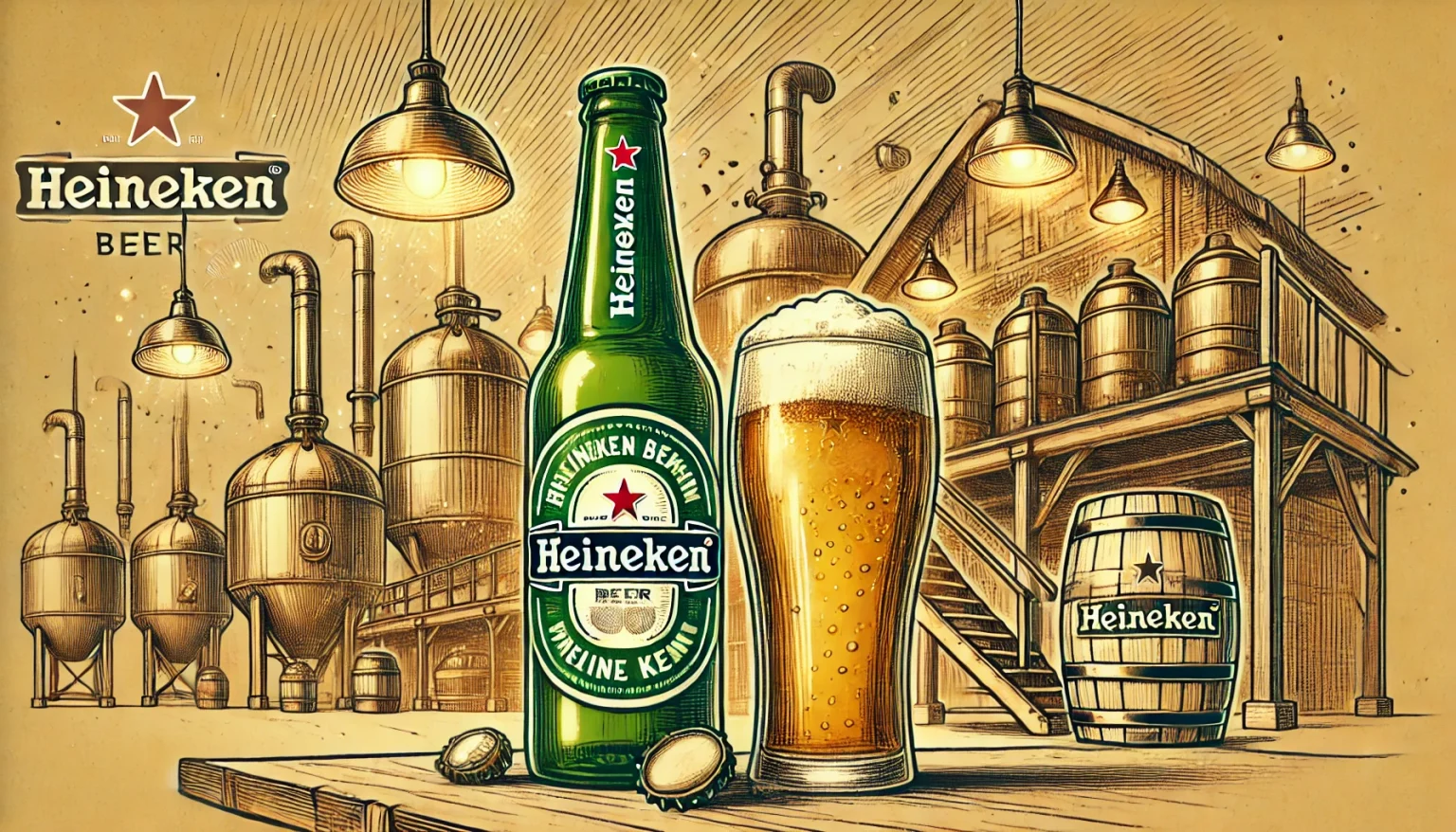Heineken released its 2024 full-year financial report on February 12, revealing a strong performance fueled by premiumization and a booming non-alcoholic beer portfolio. Despite macroeconomic headwinds like inflation and currency volatility, the company posted solid organic growth, particularly in Asia and Africa. This analysis explores Heineken’s strategic moves, market dynamics, and key takeaways for the global beer industry.
1. Heineken 2024 Financial Performance Overview
Heineken demonstrated resilience in 2024, reporting total revenue of €35,955 million, a 1.2% decline year-over-year due to currency translation effects. However, organic net revenue (beia) grew 5.0%, driven by premium and non-alcoholic beer demand in emerging markets. Operating profit (beia) rose 8.3% to €4,512 million, and net profit (beia) increased 7.3% organically to €2,739 million. Beer volume saw an organic increase of 1.6%, with the Heineken brand surging 8.8%. Other key financial highlights include a 15.1% operating profit (beia) margin, €3,058 million in free operating cash flow, and a €1.5 billion share buyback program over the next two years. Looking ahead, Heineken projects 4-8% organic operating profit (beia) growth for 2025.
2. Premiumization and Non-Alcoholic Beer Market Trends
2.1 The Acceleration of Premiumization
Premium beer remains a key driver for Heineken, achieving 5.2% organic volume growth in 2024. Heineken Silver saw mid-thirties percentage gains in China and Vietnam, while Desperados and Birra Moretti also performed strongly. In Brazil, premium brands marked an 11th consecutive year of double-digit growth, and in India, Kingfisher Ultra and Heineken Silver expanded their market presence. Compared to competitors, Heineken’s Asia-Africa strategy appears to be more aggressive than AB InBev’s Corona push or Carlsberg’s 1664 Blanc focus. Moving forward, Heineken could benefit from further localized innovation, such as market-specific flavors or packaging, a strategy that smaller craft brewers could also leverage to compete in premium segments.
2.2 The Expansion of Non-Alcoholic Beer
The non-alcoholic beer category is experiencing 7-10% annual global growth, and Heineken 0.0 remains the frontrunner with 10% volume growth across 117 markets. The strongest performance came from Brazil and the USA, while Heineken 0.0 on draught expanded to Spain, France, the Netherlands, the UK, and Ireland, tapping into social drinking trends. Heineken continues to outpace AB InBev’s Bud Zero and Carlsberg’s 0.0 offerings, thanks to its extensive distribution and strong brand equity. Expanding non-alcoholic beer availability in on-trade channels, particularly through draught systems in bars, could further drive category adoption, an approach competitors may also seek to implement.
3. Global Market Performance
3.1 Africa & Middle East (AME)
Heineken’s operations in Africa and the Middle East saw 24.5% organic net revenue (beia) growth, reaching €4.13 billion, despite a 2.3% reported decline caused by the devaluation of the Nigerian Naira. In Nigeria, Heineken and Desperados posted high-single-digit volume growth, while Egypt recorded double-digit gains. To mitigate currency risks, Heineken could further localize production in Nigeria, a strategy that other multinationals might adopt in volatile economies.
3.2 Americas
The Americas region posted 3.1% organic net revenue (beia) growth, totaling €10.41 billion. In Brazil, Heineken sustained double-digit premium growth, solidifying its market leadership. Mexico’s Tecate and Dos Equis maintained steady performance, while in the US, mainstream beer volume declined, though Heineken 0.0 saw low-teen growth. Enhancing non-alcoholic beer marketing efforts in the US could help counter softness in traditional beer sales, a lesson applicable to other brewers in mature markets.
3.3 Asia Pacific
Asia Pacific delivered 5.3% organic net revenue (beia) growth, reaching €4.23 billion. Vietnam’s Heineken Silver grew by over 50%, while Bia Viet surged 60%, reinforcing the strength of localized premium strategies. India’s premium segment also expanded, with Heineken Silver and Kingfisher Ultra gaining traction. The success of these brands suggests that premium brand extensions and local influencer partnerships could further accelerate growth in Asia, a model that other brewers might consider replicating.
3.4 Europe
Europe remained a challenging market, with net revenue (beia) declining by 1.5% to €11.85 billion due to inflationary pressures and weak consumer sentiment in the UK, France, and Spain. Nonetheless, Birra Moretti and Desperados sustained growth in Western Europe, while Heineken 0.0 expanded its presence in Eastern Europe. To regain momentum, Heineken may focus on affordable premium offerings, catering to price-sensitive consumers—a strategy that other European brewers should consider adapting.
4. Industry Challenges and Opportunities
Heineken faced a €1.66 billion negative currency impact in 2024, with inflationary cost pressures in key markets such as Brazil and Nigeria. To manage these challenges, Heineken could further localize raw material sourcing while dynamically adjusting pricing strategies to safeguard margins. On a broader scale, brewers can leverage digital platforms, like Heineken’s €13 billion eB2B system, to optimize operations and enhance resilience.
Meanwhile, opportunities lie in premiumization, particularly in Asia and Africa, and the growing non-alcoholic beer category. Additionally, Savanna Cider’s double-digit growth in Africa highlights the potential of the beyond-beer segment, an area Heineken and its competitors could explore further.
5. Strategic Priorities for 2025
Looking ahead, Heineken should introduce region-specific premium variants in Vietnam, India, and Brazil, capitalizing on their growth potential. Expanding non-alcoholic draught beer in Europe will reinforce category leadership, while AI-driven consumer insights could enhance marketing efficiency. The €1.5 billion share buyback program signals confidence, a move that other brewers may replicate to reassure investors amid economic uncertainties. Additionally, potential acquisitions in Asia’s fragmented beer market could provide further growth momentum. With a 4-8% operating profit (beia) growth target, Heineken’s strategic execution offers a blueprint for brewers navigating an evolving landscape.
References
Heineken N.V. reports 2024 full year results
2024 FYPR_Final.pdf


